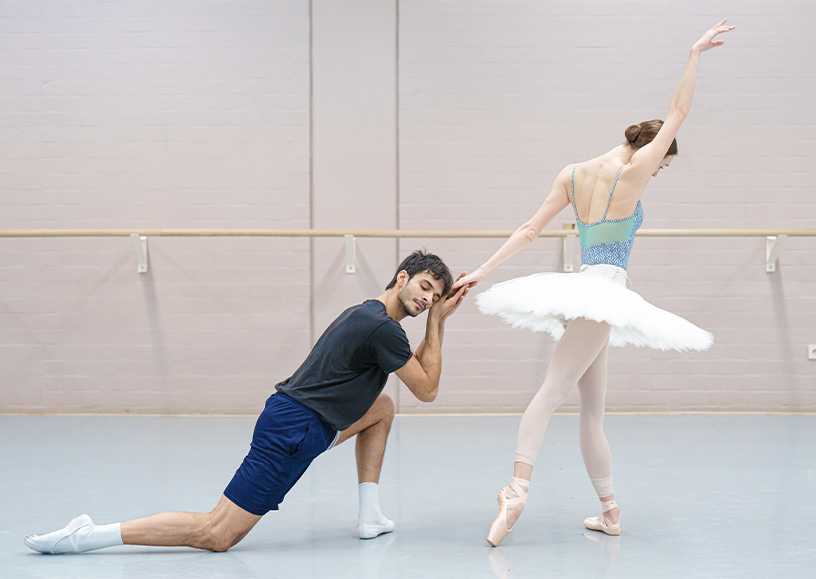
The music of Swan Lake
Pyotr Ilyich Tchaikovsky (1840-1893) composed just three ballet scores – Swan Lake, The Sleeping Beauty and The Nutcracker – but they brought about a revolution in nineteenth-century ballet music.
A minor revolution, however, as Tchaikovsky was not a composer to break completely with tradition. In any case, not with its good aspects. But he did refuse to produce mundane background music, like that of many of his predecessors and contemporaries – those hacks who behaved like obedient lapdogs. Tchaikovsky created autonomous and serious ballet music, comparable in many respects to his other orchestral works. Compared to the music of his predecessors and contemporaries, his ballet music is far more varied, filled with lyrical and symphonic elements, and above all narrative in character. After Tchaikovsky, Diaghilev’s Ballets Russes would continue along the path he had taken, regarding ballet as an integrated artwork, with equally important roles for music, dance and scenery.
COMMISSIONED WORK
Tchaikovsky was probably not even deliberately trying to bring about the revolution that he did. He was asked to write Swan Lake in 1875 and accepted the commission, as he wrote to Rimsky-Korsakov, for the money, but also because he liked dancy music, a preference that is also reflected in many of his earlier compositions. He saw writing the music for a full-length ballet as a new challenge.
At the time, a ballet composer was expected to be at the service of the choreographer. For the premiere in 1877, this choreographer was the rather less successful Julius Reisinger. Whatever was considered unsuitable for dancing had to be rewritten, and if Reisinger thought that the score lacked a Russian dance, then Tchaikovsky had to compose one. That was simply the nature of the working relationship. After the premiere, opinions were divided, as far as the music was concerned. One critic thought it monotonous and completely unsuited to dance, whereas another found Tchaikovsky’s music so strong that he could hardly keep his attention on the feeble ballet. But whether or not they appreciated it, everyone agreed that Tchaikovsky’s music was different. The difference was that Tchaikovsky had not churned out everyday background music, but composed a mature work that was eminently suited to ballet, as proved later by the choreography of Petipa and Ivanov (and the multitude of choreographers who followed them).
TONAL APPROACH
Tchaikovsky’s strength was that he related his composition to the subject matter. Not just to the tragic story, but also to the protagonists, their characters and their emotions. Rather than structuring his scores like a string of beads, in a succession of unrelated divertissements, as was customary at the time, Tchaikovsky composed his ballet music using broad symphonic lines, allowing themes and leitmotifs to develop. The musical meaning grew, deepened and blossomed, so that the storyline can be heard in the music.

Analysis of the music shows that each main character has their own key. B minor is the key of the swans and is the dominant key of the ballet. Siegfried has E major and Odette A minor and E major, among others, and everything blends wonderfully well tonally. The keys create specific associations with the protagonists, whilst also forming an essential part of the development of the whole work. This sort of tonal approach was new for ballet, and Tchaikovsky implemented it ingeniously. He knew how to express a story and how to convey an atmosphere in music that is difficult to capture in words. What could be more beautiful than representing the group of swans coming down to rest on a night-time forest lake with the unforgettable oboe solo, the harp and the vibrato strings? Or the sadness suggested by the wind instruments in the dance of the little swans? Or the herald of misfortune performed by the trumpets? That’s what makes Swan Lake the ballet it is: expressive, poignant, and moving.
Text: Maarten de Kroon
Revision: Stan Schreurs